
You’ve probably heard the term myopia before. But what exactly does myopia mean? Is it a disease? How should I cure or treat myopia? If I wear glasses, will it make my myopia even worse? This article covers everything you need toBefore discussing potential “cures” and ways to control for myopia it is important to ensure we define it correctly. A myopic eye is one that grows too long front to back. We know this because we measure it using special equipment that calculates the length of the eye from the front (cornea) to the back (retina). This distance is known as the axial length, and with advanced equipment we can now measure this down to fractions of a millimeter. So myopia is an abnormal elongation of the eye – if a normal eye is shaped like a basketball, then a myopic eye would more resemble a football.
Once an eye is too long, there are currently no known treatments or cures which can cause the axial length of the eye to reverse. Refractive surgery performed on adults, such as LASIK, does not “shrink” the eye, but rather reshapes the front surface of the cornea to enable clear vision without corrective lenses. While the patient who has successful refractive surgery can now see clearly, they still have an elongated eye, so still have the risks associated with the disease.
THE DANGERS OF HAVING MYOPIA
There are different types of myopia as well. If a child develops myopia at a young age, we know that they are at higher risk to develop high myopia and even pathological levels of myopia. High levels of myopia can lead to an increased risk for diseases of the eye such as retinal detachments, glaucoma, and myopic maculopathy. Unfortunately, those diseases can all lead to permanent vision loss. These life-altering diseases are another layer of danger besides the obvious need for optical correction in glasses or contact lenses in order to see clearly.
When you have pathological or degenerative myopia, other signs can form on your eyes that your eye doctor needs to monitor over time. Lattice degeneration and lacquer cracks of the retina all show signs that the retina is under duress because the eyeball has grown excessively long. Ask your doctor about these signs and other ones such as a tilted optic nerve head disc and choroidal neovascularization that happen exponentially higher in cases of extremely high levels of myopia.
WHAT ARE THE BEST WAYS TO TREAT MYOPIA?
The best treatment is to first prevent myopia if possible. More research is being conducted in this area, but as a general rule, eye doctors are encouraging at least two hours of outdoor activity per day. More outdoor activities under natural sunlight have been associated with a lower risk of developing myopia in the first place. If your children have to do intense studying or reading, it is recommended to do as much reading as possible when the sun has set versus reading during the day.
Regular checkups with your eye doctor to diagnose myopia as early as possible are also critical. By catching myopia at an early age, there can be many different types of interventions to prevent myopia from worsening. Myopia typically begins in school-aged children and can worsen until the leveling out usually in your mid-twenties.
As far as the visual component is concerned, usually, a pair of glasses or contact lenses are sufficient. Once the eyes have stopped growing, refractive surgery procedures can be employed as well. But keep in mind that simply correcting your vision will not stop your eyes from getting worse. The root cause of myopia, an eyeball that continues to grow excessively long during our youth, needs to be addressed.
Special pharmaceutical agents such as atropine have been shown to slow down the progression of myopia considerably. Special contacts such as orthokeratology lenses worn at night are effective as well. Even soft contact lenses and glasses designed with special optics different from the traditional pair of glasses can be effective to slow down the rate of myopic progression.
CUSTOM ORTHOKERATOLOGY OR OVERNIGHT CONTACT LENSES
Orthokeratology involves using a specially designed contact lens to gently reshape the cornea. The lenses are worn only while sleeping and are removed upon awakening in the morning. There are other names for orthokeratology such as corneal reshaping treatment, gentle vision shaping system, and custom retainers. The technology works by gently flattening the curvature of the cornea to redirect light directly onto the retina.
While initially created to help improve vision so that children and adults can see more clearly, studies have shown that the technology is extremely effective in reducing the rate of myopia progression. The theory is that light is focused in front of the retina in your peripheral vision. This effect changes the optical signals the eye receives to stimulate eye growth. Like all contact lenses, patients need to be diligent in handwashing and cleaning and disinfecting the lenses for safe use. However, studies show that with proper hygiene ‘ortho-k’ is an incredibly safe and effective treatment for treating children of almost any age.
ATROPINE
Atropine is a pharmaceutical agent that can be made into an eye drop. This eye drop has been used for many years to treat children with amblyopia, sometimes called a ‘lazy eye’. It can be used to dilate the pupils of the eye and also used to treat uveitis as well. What we’ve learned as well is that the use of a diluted concentration of atropine can also slow down the speed of myopia progression. The mechanism of action is still little known, but we believe that it blocks certain signals of the eye to reduce the signal to grow longer. By slowing down the speed at which the axial length increases, this can directly impact the rate of myopic progression.
CUSTOM SOFT MULTIFOCAL CONTACT LENSES
More contact lenses are being designed and FDA approved to slow down myopic progression. The MiSight contact lens is an example that has been shown to slow down the rate of myopia by almost 60% compared to control groups. These lenses have different powers throughout the lens that optically focuses light in front of the peripheral retina. By designing these special powers, a patient can wear a simple contact lens during the day to treat both the vision problems associated with myopia as well as prevent the eye from growing too long.
SPECIAL MYOPIA TREATING EYEGLASSES
More glasses are coming out that can also redirect light in a similar fashion to orthokeratology and soft multifocal contact lenses. This is a particularly exciting alternative for patients who cannot tolerate contact lenses and are wary of putting pharmaceutical drugs into their children’s bodies. From large bifocal eyeglasses to lenses with specialized rings of power in them, lenses are becoming more and more advanced to prevent axial length elongation.
TREEHOUSE EYES CAN HELP PREVENT MYOPIA PROGRESSION
The good news is we help prevent or slow down myopia progression in kids—just like yours—so they can have their best shot at academic and social success! Above are four of the best ways we treat myopic progression once your child has been diagnosed with myopia. Orthokeratology involves reshaping the eye gently with a contact lens while sleeping. Atropine involves an eye drop that can signal the eye to grow a little slower. Custom soft multifocal lenses are worn during the day. And even specially designed glasses are on the horizon to improve the progression of myopia.
The Treehouse Eyes eye doctors use state-of-the-art equipment to develop a personalized treatment plan for your child. Our non-invasive treatments include customized contact lenses and special prescription eye drops. Moreover, data shows that our patent-pending Treehouse Vision System® treatment plan can decrease myopia progression by 78%.
Give your child the tools they need to succeed! To schedule your child’s back-to-school eye exam, contact us to see a list of all providers near you visit Treehouse Eyes today.

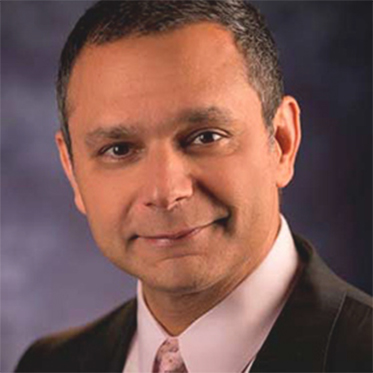
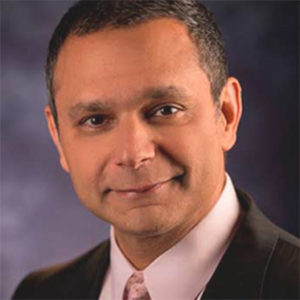 Dr. Kapadia originally hails from St. Catharines, Ontario, Canada where he earned his Bachelor of Arts degree from Brock University. He then went on to graduate with honors from the Michigan College of Optometry in 1998, where he specialized in contact lenses. After he graduated, Dr. Kapadia completed a one-year residency at the renowned Bascom Palmer Eye Institute in Miami, Florida, where he focused on ocular diseases.
Dr. Kapadia originally hails from St. Catharines, Ontario, Canada where he earned his Bachelor of Arts degree from Brock University. He then went on to graduate with honors from the Michigan College of Optometry in 1998, where he specialized in contact lenses. After he graduated, Dr. Kapadia completed a one-year residency at the renowned Bascom Palmer Eye Institute in Miami, Florida, where he focused on ocular diseases. Dr. Kapadia graduated with honors from the Michigan College of Optometry in 1999, where she received the Wesley-Jessen award for Outstanding Work in Contact Lenses. During her studies, she also served as President of Student Volunteer Optometric Services to Humanity (SVOSH), which works to improve the sight of millions of people in developing countries.
Dr. Kapadia graduated with honors from the Michigan College of Optometry in 1999, where she received the Wesley-Jessen award for Outstanding Work in Contact Lenses. During her studies, she also served as President of Student Volunteer Optometric Services to Humanity (SVOSH), which works to improve the sight of millions of people in developing countries.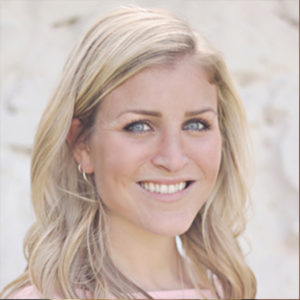 After growing up in Minersville, Pennsylvania, Dr. Price graduated from Susquehanna University in 2012 with a Bachelor’s Degree in Biology. Dr. Price continued her education at the Pennsylvania College of Optometry and completed her training in 2016. After graduation, Dr. Price spent her career studying advanced eye diseases and specialized Low Vision services and devices.
After growing up in Minersville, Pennsylvania, Dr. Price graduated from Susquehanna University in 2012 with a Bachelor’s Degree in Biology. Dr. Price continued her education at the Pennsylvania College of Optometry and completed her training in 2016. After graduation, Dr. Price spent her career studying advanced eye diseases and specialized Low Vision services and devices.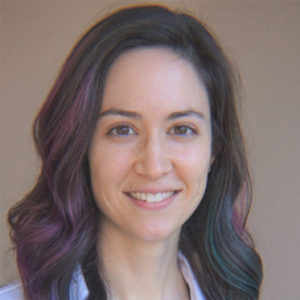 Dr. Morgan Kickliter grew up in Hendersonville, Tennessee.
Dr. Morgan Kickliter grew up in Hendersonville, Tennessee.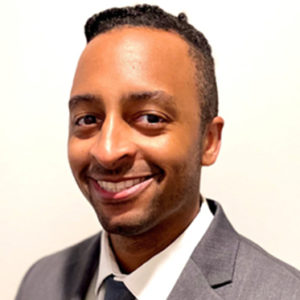 Dr. Phillips earned his Bachelor of Science in Chemistry at the University of Georgia before achieving his Doctor of Optometry from the Southern College of Optometry. There, he served as Vice President of the Georgia Optometric Student Association and provided free and cost-reduced optometric care to underserved patients in Mexico and Belize with the Student Volunteer Optometric Services to Humanity. He served his residency at Gainesville Eye Associates, focusing on ocular diseases.
Dr. Phillips earned his Bachelor of Science in Chemistry at the University of Georgia before achieving his Doctor of Optometry from the Southern College of Optometry. There, he served as Vice President of the Georgia Optometric Student Association and provided free and cost-reduced optometric care to underserved patients in Mexico and Belize with the Student Volunteer Optometric Services to Humanity. He served his residency at Gainesville Eye Associates, focusing on ocular diseases.